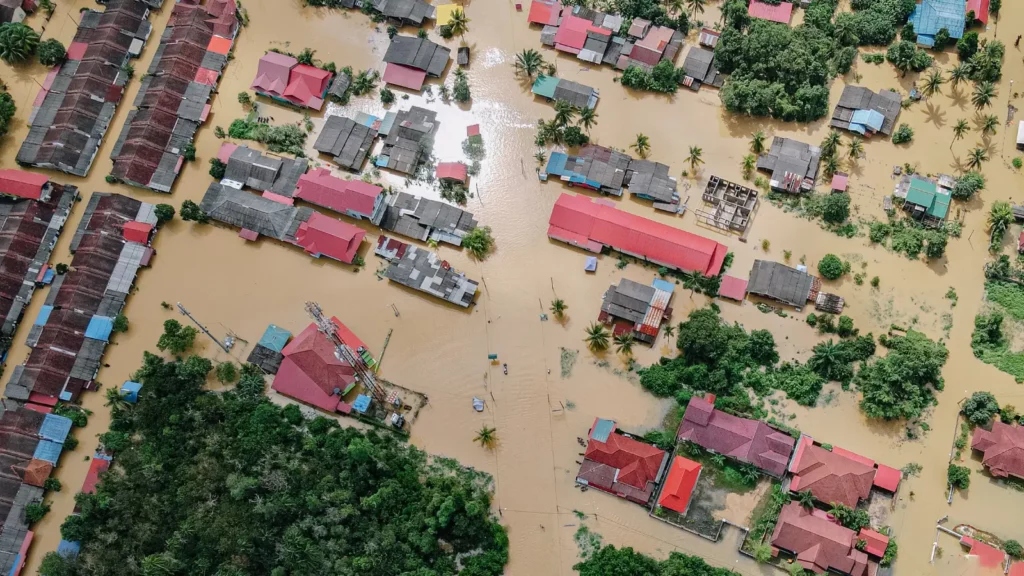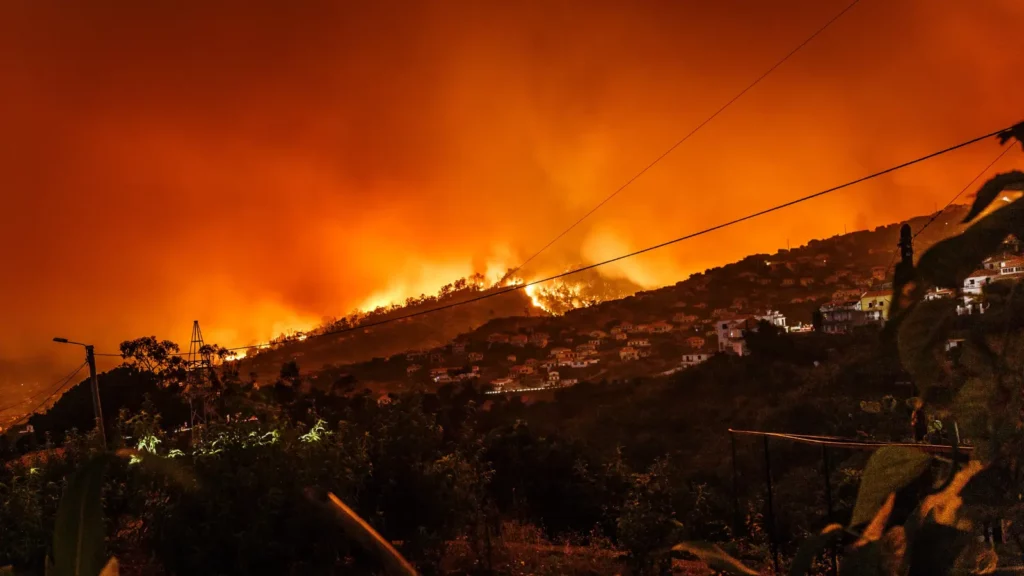Rising Temperatures, Rising Risks: UXO and the Climate Crisis
In an ever-changing world with advancing technology and unpredictable environmental conditions, the issue of unexploded ordnance (UXO) has taken on even greater significance.
The climate crisis, characterised by extreme weather events and rising temperatures, poses a significant risk to the safety and security of communities around the globe.
Unpredictable Weather Patterns
As emissions increase and temperatures rise, weather patterns become increasingly unpredictable, bringing frequent droughts, storms and wildfires. It’s these elements that make the climate crisis more than a concern for the future; it’s an acute problem for our changing world, especially when factoring in unexploded ordnance.
For example, tropical storms and increased rainfall have led to flooding and landslides around the world, exposing and displacing items of UXO. This can lead to unexploded ordnance resurfacing and washing up downstream, people being evacuated to dangerous and contaminated areas, and degrading ordnance releasing harmful chemicals, contaminating soil and groundwater. Not only is this devastating for farmland, but it can also be difficult to locate and dispose of the explosives. Furthermore, many mine action groups have used maps to survey and clear minefields for decades, but they may now find that information is redundant.
Cambodia serves as a stark example of the devastating effects of climate change and the associated risk of migrating UXO. As one of the most heavily contaminated countries in the world, tropical storms and flooding pose a constant threat of UXO being transported from various locations across the country, exacerbating the threat to local populations.
One of the most significant challenges is the emergence of UXO in previously unmarked areas. Flooding and landslides can transport ordnance to new locations, creating hazardous zones that lack warning signs or awareness campaigns. This lack of visibility makes it even more difficult for local communities to recognise and avoid the dangers presented by these hidden remnants.
With climate change predicted to escalate further, more nations may face similar challenges in the future.

Heat and UXO
The escalating global temperatures are already impacting the work of UXO operatives, particularly in regions experiencing extreme heat. In some cases, this heat can damage the structural integrity of munitions, posing additional risks when dealing with already sensitive items of ordnance. Past incidents in Iraq have demonstrated the dangers posed by heat, with older UXO becoming more susceptible to accidental detonations due to increased sensitivity.
The Impact of Wildfires
The alarming impact of wildfires on ecosystems and communities is widely known, but in recent years these destructive infernos have revealed another perilous threat: the detonation of UXO. As the world grapples with the increasing frequency and intensity of wildfires, the intersection with areas contaminated by UXO has become a pressing concern.
When wildfires spread to regions that have experienced past conflicts or military activities, they can unearth and ignite buried UXO, leading to further devastating consequences. One of the critical factors leading to this is the exposure of munitions to extreme heat. High temperatures can cause the explosives to become unstable and sensitive, increasing the likelihood of unintentional detonations. In areas where UXO has remained dormant for decades, the ageing process can exacerbate their instability, making them even more susceptible to the effects of intense heat.
A notable example occurred during the wildfires in eastern regions of Ukraine in 2020. The fires swept through areas contaminated by UXO from previous conflicts, leading to explosions of unexploded shells. Similarly, in peaceful countries like Italy and Slovenia, wildfires have triggered UXO from World War I, posing a historical yet still dangerous threat.
Moreover, the spread of wildfires in areas with known UXO contamination can hinder firefighting efforts. For example, fire crews in the UK were told they could not enter Salisbury Plain in 2022 to tackle several fires due to the UXO risk. Similarly in the same year, firefighters in Germany were prevented from reaching wildfires in a forest south of Berlin due to repeated explosions at a site used to store unexploded ordnance, ranging from confiscated illegal fireworks to second world war munitions.
The impact of wildfires detonating UXO extends beyond immediate danger. The resulting explosions can exacerbate the spread of fires. The collateral damage to the environment is significant, with ecosystems ravaged, soil contaminated, and air quality compromised.

Responding to the Climate Crisis
Acknowledging the challenges posed by the climate crisis, the UXO sector is actively adapting its practices and priorities. One key area of focus is minimising the environmental impact of UXO clearance operations.
At Brimstone, we’re working to cut the emissions that contribute to the climate crisis. With the help of Carbon Neutral Britain™, we’ve offset and drastically reduced our emissions, becoming a carbon neutral company. We’re constantly innovating to find the most sustainable forms of mitigation, while our work creates a safer environment at home and abroad.
Our Risk Mitigation Services
Visit our website to learn more about our unexploded ordnance services, including risk assessments, surveys, investigations, and disposal. If you are unsure how we can best help you, you can use our handy online tool to find the right service for you and your project.
Keep up to date with Brimstone UXO by following us on Facebook, Instagram, Twitter, LinkedIn and YouTube.